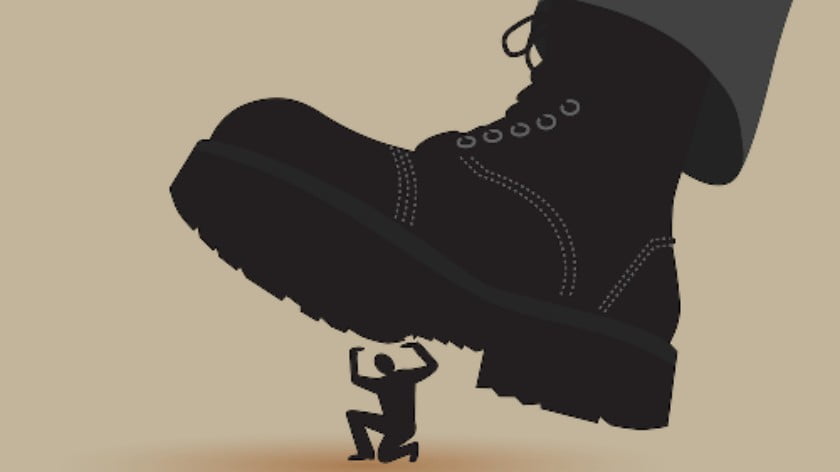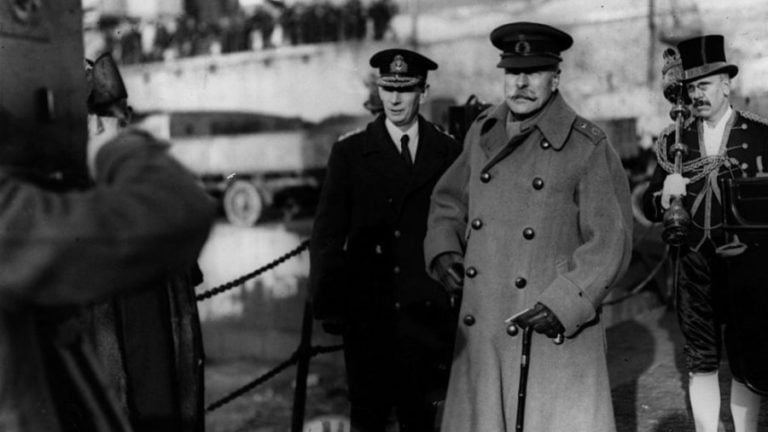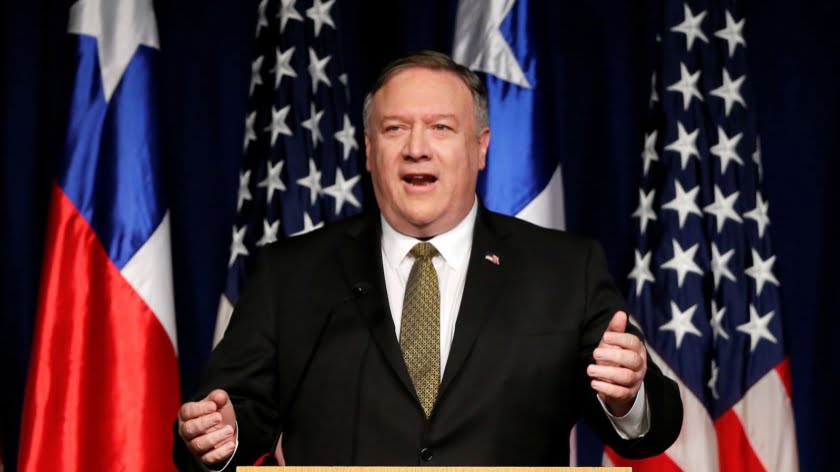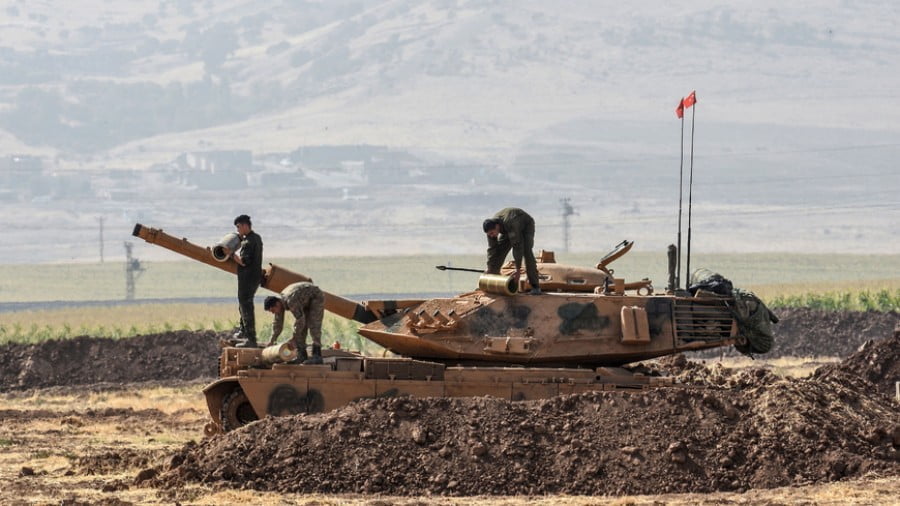That Other War – Struggle and Suffering in Sudan
It’s been devastating, even if no one’s paying attention.
Three months of fighting in Sudan between the army and a paramilitary group called the Rapid Support Force (RSF) has left at least 3,000 people dead and wounded at least 6,000 more. Over two million people have been displaced within the country, while another 700,000 have fled to neighboring nations. According to the World Health Organization, two-thirds of the health facilities in Khartoum, the capital, and other combat zones are now out of service, so the numbers of dead and injured are believed to be far higher than recorded, and bodies have been rotting for days in the streets of the capital, as well as in the towns and villages of the Darfur region.
Almost all foreign nationals, including diplomats and embassy staff, are long gone and so, according to Al Jazeera, hundreds or thousands of Sudanese who had visa applications pending have instead found themselves marooned in the crossfire with their passports locked away inside now-abandoned embassies. In the Darfur region, according to non-Arab tribal leaders, the RSF and local Arab militias have been carrying out mass killings, raping women and girls, and looting and burning homes and hospitals. Earlier this month, United Nations humanitarian chief Martin Griffiths told the Associated Press, “If I were Sudanese, I’d find it hard to imagine that this isn’t a civil war… of the most brutal kind.”
According to the United Nations, half the country’s population, a record 25 million people, is now in need of humanitarian aid. And worse yet, half of those are children, many of whom were in dire need even before this war broke out. Tragically, global warming will only compound their misery. Among 185 nations ranked by the Notre Dame Global Adaptation Initiative, Sudan is considered the sixth most susceptible to harm from climate change.
Heat waves, drought, and flooding are projected to become ever more frequent and intense as the atmosphere above Sudan warms further. This summer war and weather have been converging in strikingly deadly ways. With cloudless skies, water and electricity services largely knocked out, and daily temperature highs in the capital recently ranging from 109° to 111° Fahrenheit, the misery is only intensifying. Meanwhile, in the Darfur region and across the border in eastern Chad, the season of torrential rains is about to begin. The country director for Concern Worldwide in Chad says that many of the quarter-million Sudanese refugees there “are living in makeshift tents made from sticks and any material they can find, which means they are not protected from the heavy rains. The situation is catastrophic.”
This Conflict Will Not Be Televised
Among the refugees from this war are some of our own relatives and in-laws, part of an extended Indian-Sudanese family who have lived in Khartoum all their lives. In May, they fled the escalating violence, some via a perilous, hair-raising 500-mile road trip across the Nubian Desert to Port Sudan. There, they caught a ship across the Red Sea to Jeddah, Saudi Arabia. Their goal, as they informed us in June through voice messages, was Egypt — so far, the most common destination for Sudanese refugees over the past three months. And mind you, desperate as they may be, our relatives are in a far less perilous situation than people fleeing the Darfur region for Chad. Still, they are leaving behind a life built up over decades, without knowing if they will ever be able to return to Khartoum.
And here — for us — is a disturbing reality. We’ve had to do a lot of searching to find significant information in the U.S. major media about the struggle in Sudan, no less the plight of its refugees — though recently there were finally substantive reports at NPR and in the Washington Post. Still, the contrast with 16 months of breathless, daily, top-of-the-hour reporting on the Ukraine war and the millions of people it’s displaced has been striking indeed.
There’s a major difference as well between Washington’s responses to each of those wars. Before the fighting broke out in Sudan, the country had about 30% fewer people living in need of humanitarian assistance than Ukraine. Now, it has almost 50% more than Ukraine. Given those relative needs, U.S. humanitarian aid to Sudan in Fiscal Year 2023 ($536 million) was not all that skimpy compared with the humanitarian aid going to Ukraine ($605 million). — not, at least, until you add in the $49 billion in military aid Washington has been sending to Kyiv — 80 times the civilian aid, to which has only recently been added fundamentally anti-humanitarian cluster bombs. In the past year, in other words, Ukraine got 13% more humanitarian aid than Sudan but 93 times more total aid when you count war assistance.
And the U.S. is not alone. The entire world is lagging badly in its response to the humanitarian tragedy in Sudan. William Carter of the Norwegian Refugee Council recently lamented, “I haven’t seen it treated with urgency. It’s not ignorance; it’s a case of apathy.” Admittedly, conditions in Sudan and Chad make aid delivery difficult now, but Western powers, Carter pointed out, are simply “not willing to stick their necks out.”
Sidelining Civilians, Coddling Generals
Washington has assisted Ukraine massively since the war there began. In contrast, its actions in the months leading up to Sudan’s current conflict were not only ineffective but may even have made war more likely.
Some background: Four years ago, a popular uprising overthrew the country’s longtime autocratic president, Omar al-Bashir. A Sovereignty Council was formed to negotiate a transition to democracy. Susan Page, who served as the first U.S. ambassador to the Republic of South Sudan, has written that the council’s designation as a “civilian-led transitional government” was “always a bit of a fig leaf,” given that its membership included more military officials than civilians. The transition was even led by military officials, including the two men who command the forces now locked in battle, Sudanese army chief General Abdel-Fattah Burhan and General Mohamed Hamdan, who leads the RSF paramilitary group.
After two years of obstructing the work of the Sovereignty Council, that odd duo joined forces in an October 2021 coup and took control of Sudan. The negotiations over a democratic transition, mediated by the United States, Great Britain, the United Arab Emirates, and Saudi Arabia nonetheless went on for another 18 months, while those generals continued to stonewall. According to Democratic Senator Chris Coons of Delaware, the generals even stooped to outright extortion, hinting that if they didn’t get full backing from the West, they’d create a fresh migration crisis in Europe by kicking out hundreds of thousands of their fellow Sudanese and sending them northward. Still, last February, with military-civilian negotiations bogged down, Coons remained hopeful, writing,
“The Sudanese people… are not backing down in the defense of their political gains. Even in the face of persistent killings, sexual violence, and arrests by the regime, a massive, nationwide pro-democracy movement has for months maintained nonviolent street protests. The determination these thousands of people have shown as they risk their lives against heavily armed security forces should serve as a reminder the world over of how precious democracy truly is.”
Coons urged the Biden administration to throw its weight behind the pro-democracy movement, with sanctions that would hit the military leaders hard while sparing civil society: “A modern, comprehensive set of sanctions on the coup leaders and their networks,” he wrote, “will disrupt the military’s revenue streams and their grip on power, creating an opening for the nation’s nascent democracy movement to grow.” As is now painfully obvious, Biden didn’t take Coons’s advice and, six weeks later, the shooting started.
In an article published soon after the outbreak of fighting, Edward Wong and three colleagues at the New York Times reported that some of the people who played a part in the negotiations told them “the Biden administration, rather than empowering civilian leaders, prioritized working with the two rival generals,” even after they’d seized power in that coup. A high-level government adviser assured the Times that senior American diplomats “made the mistake of coddling the generals, accepting their irrational demands, and treating them as natural political actors. This fed their lust for power and their illusion of legitimacy.”
“A Critical Puzzle Piece”
The broad lack of concern for the Sudanese people in the U.S. and other rich countries also contrasts sharply with the intense geopolitical interest in Sudan of certain regional powers. Mohammad Salami of the International Institute for Global Strategic Analysis observes that Washington’s Persian Gulf allies have big plans for Sudan, thanks to its strategically important Red Sea coastline, its wealth in mineral resources, and its potential for tourism and agricultural production. (We can’t help wondering if they’re taking into account the degree to which its farming may, in the future, be clobbered by climate change.) Looking ahead, Salami writes, “The United Arab Emirates and Saudi Arabia have long-term plans for Africa, and for Sudan as their gateway to it.”
Until the recent chaos began, Sudan had also been a gateway for refugees from Asia, the Middle East, and other parts of Africa. Writing less than three weeks into the Sudan conflict, MSNBC columnist Nayyera Haq observed that many of the people then fleeing the country were, in fact, repeat refugees, having fled previous conflicts in Syria, Yemen, and Myanmar, among other places. As Western diplomats and embassy staff across Khartoum rushed for the exits (echoes of Kabul and Kandahar two summers ago!), Haq concluded,
“Sudan, once considered a far-off nation, is now a critical puzzle piece in this era of great power competition among global economies. As boundaries continue to blur because of technology and climate change, forced migration is more common: millions flee north from Latin America to the U.S., from Syria to Europe, and now across East Africa. But the same countries eager to extract oil and minerals from Africa are quick to shut down, only watching out for their own as Sudan devolves into chaos.”
Sudan is indeed rich in mineral resources that span the alphabet: aluminum, chromium, cobalt, iron, manganese, nickel, rare earths, silver, and zinc. All of those are important to the world’s renewable energy and battery industries. But Sudan’s biggest source of wealth lies in its gold deposits. The gold-mining industry is largely owned by a Russian-Sudanese joint venture headquartered in the northeast of the country. The wealth it’s generated hasn’t benefited the Sudanese people. Before the recent chaos, in fact, it was being split by the military regime, the Russian government, and none other than the infamous warlord Yevgeny Prigozhin’s Wagner Group, which had been managing the joint venture’s gold-mining and processing operations since 2017. And Wagner being Wagner, they also have now taken sides in Sudan’s war, according to the U.S. Treasury Department, by providing surface-to-air missiles to the RSF paramilitary forces.
Unworthy Victims
The paucity of attention paid to civilian victims of the conflict in Sudan compared to Ukrainian civilians brings to mind the contrast between “worthy” and “unworthy” victims drawn by Edward Herman and Noam Chomsky in their 1988 book Manufacturing Consent. They contrasted the extensive mass-media coverage of the 1984 murder of a Polish priest, Jerzy Popieluszko, during the Cold War with the lack of the same when it came to more than two dozen priests and other religious people slaughtered by governments and death squads in El Salvador and Guatemala in those years., Having been murdered by agents of a Communist government. Popieluszko was regarded as worthy of attention in the American media of the time, while his counterparts slaughtered by Central American governments allied with the U.S. weren’t. In a similar fashion, white Europeans now being killed, wounded, or rendered homeless by Russian troops are victims worthy of media attention, while Sudanese facing similar fates aren’t.
To be fair, a previous horrific conflict that gripped Sudan’s Darfur region from 2003 to 2008 did receive significant coverage in the Western media thanks to a convergence of unusual circumstances. The chief among them: the massive attention it received from celebrities of the time, including Angelina Jolie, George Clooney, Lady Gaga, and Mia Farrow. Sudan’s media appeal of 15 years ago was, however, an exception to the rules of this world of ours. Today, such celebrities and the media seem to be gripped by a kind of compassion fatigue.
Of course, like most Americans, we were paying no attention whatsoever to developments in Sudan before the fighting started — and before we learned that our own kinfolk were in danger. Now, what choice do we have but to keep up with the latest developments?
For weeks, our relatives were in limbo, trying to reach Egypt. Some were already in Jeddah, Saudi Arabia, but stuck there. Others had made it to Addis Ababa, Ethiopia. We were by then in touch and they acknowledged that they were “better off than most,” meaning they weren’t being pinned down in a deadly 110° war zone without passports, electricity, or running water, nor were they, like so many Sudanese, trapped in squalid refugee camps.
Only the other day, we finally learned that they had arrived safely in Egypt. Back in Khartoum they’d operated a small school, and they’re now hoping, if they can work their way through Cairo’s bureaucracy, that, as one of them put it, “Next year, Inshallah, we can start our school here, if we are still here and still war-driven.” Their futures have indeed been driven by war into a hard-to-imagine future. As one put it, “Nothing seems to be settling down in Sudan anytime soon.”
Sadly, their assessment seems all too accurate. Since April, at least 10 ceasefires between the army and that paramilitary outfit have broken down more or less instantly. In mid-July, leaders of the six countries bordering Sudan met, in the impressive-sounding words of Egyptian President Abdel Fattah el-Sissi, to formulate “an executive action plan to reach a comprehensive solution to the Sudanese crisis.”
Not so surprisingly, though, no such plan has yet emerged. Given its resources and its geographical centrality, an assortment of richer, stronger countries all want a piece of Sudan, but none of those plans include the war’s victims. To make matters worse, in this war (as in others to come), climate disruption will be a “threat multiplier.” Worse yet, as long as our media fails to see the Sudanese conflict or, more importantly, the Sudanese people as worthy of extensive reporting, the realities of the ongoing war there will continue to lie somewhere beyond the horizon.







